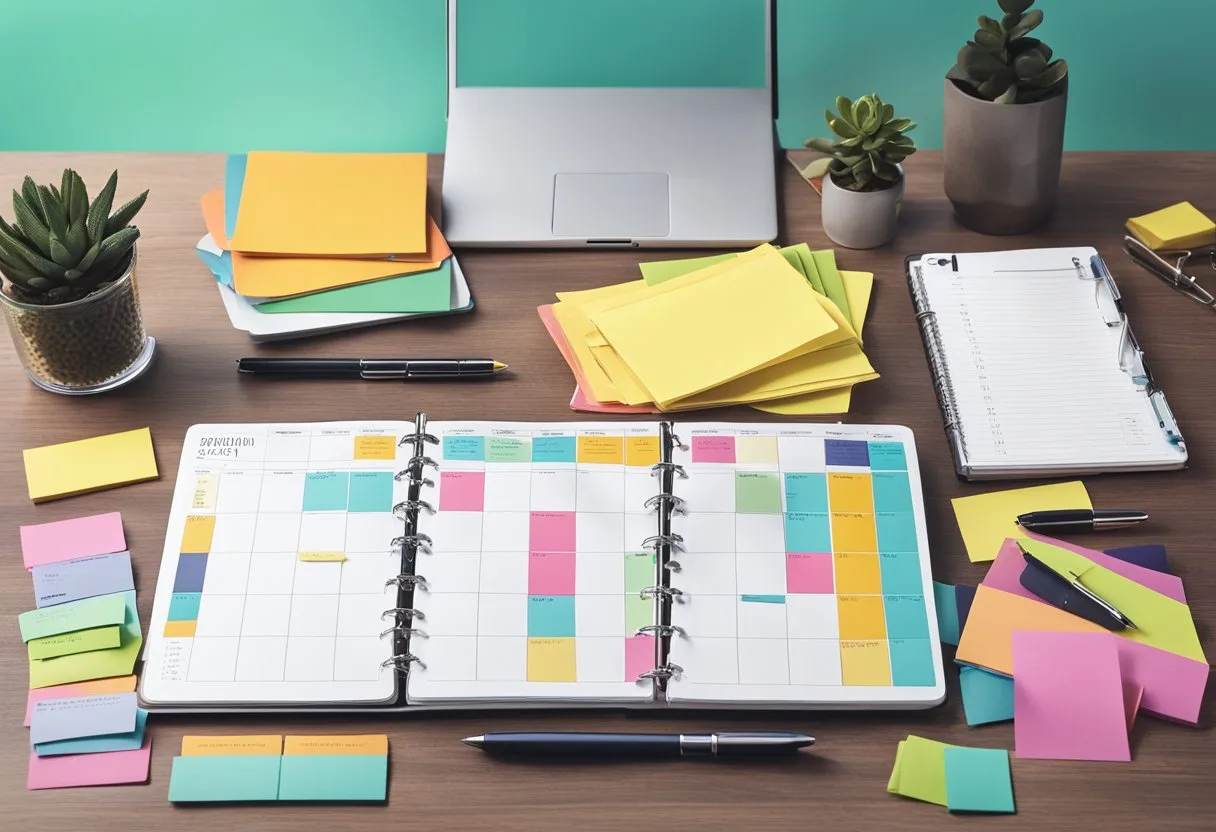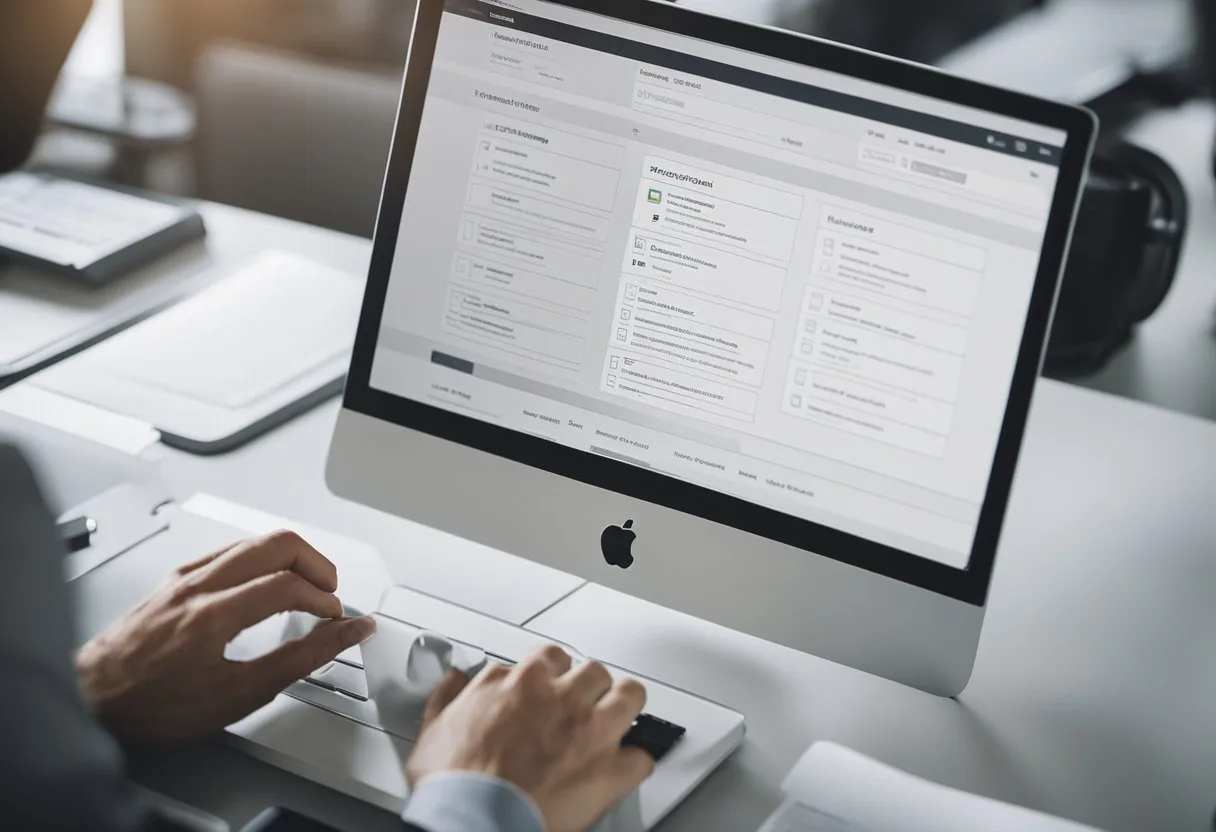Wellness planners can be a helpful tool in promoting self-care and mindfulness. They can help individuals keep track of their daily habits, set goals, and reflect on their progress. However, coming up with ideas for a wellness planner can be overwhelming for some people. In this blog post, I will share with you 55 wellness planner ideas to help you organize your health and wellness goals.
One idea for a wellness planner is to include sections for tracking sleep, mood, energy, nutrition, water intake, exercise, mobility, gratitude, and self-care. This can help individuals identify patterns in their daily habits and make adjustments as needed to improve their overall well-being. Including sections for morning and evening reflection can help individuals start and end their day on a positive note.
Setting Wellness Goals in your planner
Setting wellness goals is an essential step towards achieving a healthy and balanced lifestyle. Identifying personal wellness goals, incorporating specific goals, and establishing a timeline for achievements are crucial aspects of creating a successful wellness plan.
Identifying Personal Wellness Goals
The first step in setting wellness goals is identifying personal wellness goals. One can start by assessing their current state of health and identifying areas that need improvement. This self-assessment can help individuals determine the areas they need to focus on and set realistic and achievable goals.
It is essential to set specific and measurable goals that align with an individual’s values and priorities. For instance, if an individual values physical fitness, they can set a goal of working out three times a week.
Incorporating Specific Goals
Incorporating specific goals into a wellness plan is crucial to ensure that an individual is working towards their desired outcome. Specific goals should be tailored to an individual’s needs and preferences. For instance, if an individual wants to improve their mental health, they can set a goal of practicing mindfulness meditation for ten minutes every day.
It is also crucial to incorporate a variety of goals that align with different aspects of wellness, such as physical, emotional, and spiritual health. This approach ensures that an individual’s wellness plan is comprehensive and well-rounded.
Establishing a Timeline for Achievements
Establishing a timeline for achievements is crucial to ensure that an individual is making progress towards their wellness goals. Setting deadlines for goals can help individuals stay motivated and accountable.
It is essential to set realistic timelines that align with an individual’s lifestyle and schedule. For instance, if an individual wants to lose weight, they can set a goal of losing one pound per week. This approach allows individuals to track their progress and make adjustments to their wellness plan as needed.
Setting wellness goals is an essential step towards achieving a healthy and balanced lifestyle. By identifying personal wellness goals, incorporating specific goals, and establishing a timeline for achievements, individuals can create a comprehensive wellness plan that aligns with their values and priorities.
55 Wellness planner ideas

- Daily gratitude journaling
- Exercise log
- Meal planning and tracking
- Water intake record
- Sleep duration and quality tracker
- Mood monitoring
- Medication and supplement log
- Mindfulness or meditation practice log
- Self-care activities planner
- Habit tracker for new health routines
- Weight loss or gain tracker
- Body measurements record
- Symptom tracker for physical or mental health
- Blood pressure and heart rate log
- Blood sugar levels tracker for diabetics
- Stress levels assessment
- Energy levels monitoring
- Personal goals setting and progress tracking
- Inspirational quotes and affirmations
- Health appointments and check-ups schedule
- Menstrual cycle tracker
- Fertility window and ovulation calendar
- Skin care routine and outcomes
- Daily reflections and journal prompts
- Creativity log for art, writing, or other projects
- Financial wellness budgeting and savings goals
- Professional development and career goals
- Learning and education tracker
- Book reading list and summaries
- Social connection log to track time with loved ones
- Acts of kindness journal
- Environmental wellness actions, like recycling or composting
- Digital detox and screen time monitoring
- Home organization and cleaning schedule
- Bucket list of experiences or travel destinations
- Volunteer work and community service log
- Personal growth milestones
- Therapy or counseling notes
- Allergy or food reaction diary
- Pain intensity and location log
- Breathing exercises and outcomes
- Yoga practice tracker
- Strength training routines and progress
- Cardio workout log
- Flexibility and stretching routine tracker
- Balance and coordination exercises log
- Sports practice and skill development tracker
- Dance or movement therapy sessions
- Nature and outdoor activity log
- Pet care routine and bonding activities
- Music practice and appreciation log
- Art therapy sessions and insights
- Cooking and baking experiments
- Gardening activities and plant growth tracker
- DIY projects and home improvement plans
Designing Your Wellness Planner
When it comes to designing your wellness planner, there are a few things to consider to ensure that it is tailored to your unique needs and preferences. Below are some tips to help you create a planner that works for you.
Choosing the Right Planner
The first step in designing your wellness planner is choosing the right one. There are many different types of planners available, so it’s important to find one that meets your specific needs. Some popular brands of wellness planners include Ban.do and Amazon.
Consider the size, layout, and features of the planner when making your choice. Do you prefer a daily, weekly, or monthly layout? Do you want space for meal planning, exercise tracking, or self-reflection? Make sure the planner you choose has the sections and features that are important to you.
Customizing Layouts and Sections
Once you have chosen your planner, it’s time to customize it to fit your needs. Most planners come with pre-designed layouts and sections, but you can easily modify them to suit your preferences.
Consider adding sections for tracking your water intake, sleep patterns, and mood. You can also customize the layout to include space for gratitude journaling, goal setting, and self-care activities.
Utilizing Printable Wellness Planner and Stickers
If you can’t find a planner that meets your needs, consider utilizing printable wellness planner pages and stickers. These can be found online and printed at home, allowing you to create a planner that is completely customized to your preferences.
Printable wellness planner pages can include sections for meal planning, exercise tracking, and self-reflection. Stickers can be used to add visual interest and organization to your planner.
Designing your wellness planner is a personal process that requires some trial and error to find what works best for you. By choosing the right planner, customizing the layout and sections, and utilizing printable pages and stickers, you can create a planner that helps you prioritize your health and wellness.
Tracking Progress and Habits
![]()
Keeping track of progress and habits is an essential aspect of maintaining a healthy lifestyle. It helps individuals to identify areas where they need improvement and track their progress over time. Here are some ideas for tracking progress and habits:
Creating a Habit Tracker
Habit trackers are a great way to monitor and track progress towards achieving healthy habits. Creating a habit tracker can be done either manually or through the use of an app. Habit trackers can be used to track a wide range of habits such as drinking enough water, getting enough sleep, or exercising regularly.
Monitoring Fitness and Nutrition
Tracking fitness and nutrition is another important aspect of maintaining a healthy lifestyle. It helps individuals to monitor their progress towards fitness goals and ensure they are meeting their nutritional needs. There are several ways to monitor fitness and nutrition, including using fitness and nutrition apps, keeping a food diary, or using a mood tracker to track how food affects mood.
Reflecting with a Gratitude Journal
Gratitude journals are an effective way to reflect on the positive aspects of life and promote a positive mindset. Reflecting on things that one is grateful for can help to reduce stress and increase happiness. Gratitude journals can be used to track progress towards cultivating a more positive mindset and to reflect on the things that one is grateful for each day.
Tracking progress and habits is an important aspect of maintaining a healthy lifestyle. It helps individuals to identify areas where they need improvement and track their progress over time. By creating a habit tracker, monitoring fitness and nutrition, and reflecting with a gratitude journal, individuals can take control of their health and wellbeing.
Incorporating Self-Care and Mindfulness

Developing a Self-Care Routine
Self-care is the practice of taking care of one’s physical, emotional, and mental health. It is essential to develop a self-care routine that works for you. A self-care routine can include activities such as exercise, meditation, deep breathing, and spending time with loved ones.
To develop a self-care routine, start by identifying what activities bring you joy and make you feel good. Make a list of these activities and incorporate them into your daily routine. It is also important to prioritize self-care and make time for it every day.
Practicing Mindfulness and Meditation
Mindfulness is the practice of being present and fully engaged in the moment. It involves paying attention to your thoughts, feelings, and surroundings without judgment. Mindfulness can be practiced through meditation, deep breathing, or simply taking a moment to pause and focus on your breath.
Meditation is a practice that involves focusing your attention on a specific object, thought, or activity to achieve a state of calm and relaxation. It can help reduce stress, improve focus, and promote emotional well-being.
Prioritizing Mental and Emotional Wellness
Mental and emotional wellness are essential components of overall well-being. It is important to prioritize mental and emotional wellness by seeking support when needed, practicing self-love, and engaging in activities that promote positive emotions.
Self-love involves treating yourself with kindness, compassion, and respect. It includes accepting yourself for who you are and practicing self-care regularly. Engaging in activities that promote positive emotions, such as spending time with loved ones, practicing gratitude, and pursuing hobbies, can also help promote mental and emotional wellness.
Incorporating self-care and mindfulness into your daily routine can help promote overall well-being and improve your quality of life. By prioritizing self-care, practicing mindfulness and meditation, and prioritizing mental and emotional wellness, you can achieve a greater sense of balance and harmony in your life.
Optimizing Wellness Through Daily Routines
Establishing a daily routine is essential for optimizing wellness. It helps people to stay on track, remain productive and accomplish their daily goals.
Building a Productive Morning Routine
Starting the day with a productive morning routine can help to set the tone for the rest of the day. It is important to wake up at a consistent time each day and avoid hitting the snooze button. Incorporating activities such as stretching, meditation, or journaling can help to reduce stress and increase focus. Drinking water and eating a healthy breakfast can provide the necessary energy to start the day off right.
Winding Down with an Evening Routine
Having an evening routine is just as important as having a morning routine. It helps to signal to the body that it is time to wind down and prepare for sleep. Activities such as reading, taking a warm bath, or listening to calming music can help to relax the mind and body. It is also important to avoid using electronic devices before bed as the blue light can interfere with the body’s natural sleep cycle.
Incorporating Daily Movement and Fresh Air
Incorporating daily movement and fresh air is crucial for physical wellness. Going for a walk or jog outside in the morning or evening can provide a boost of energy and improve mood. Taking breaks throughout the day to stretch or do some light exercise can help to reduce stress and improve productivity.
Establishing a daily routine that includes a productive morning routine, winding down with an evening routine, and incorporating daily movement and fresh air can help to optimize wellness and improve overall health.
Frequently Asked Questions

What essential elements should be included in a wellness planner?
A wellness planner should include essential elements such as daily and weekly goal-setting, meal planning, exercise tracking, and self-care activities. It should also have sections for tracking physical and mental health, sleep patterns, and hydration levels.
How can students effectively incorporate wellness planning into their daily routine?
Students can effectively incorporate wellness planning into their daily routine by setting aside a specific time each day to plan out their meals, activities, and self-care routines. They can also utilize apps and other tools to help them stay on track and hold themselves accountable.
What strategies can be used to track mental health progress in a wellness planner?
Strategies that can be used to track mental health progress in a wellness planner include journaling, tracking mood and emotions, and incorporating self-care activities. It is also important to seek professional help if needed and to regularly check in with oneself to monitor progress and make any necessary adjustments.
What are the steps to creating a personalized wellness planner from scratch?
The steps to creating a personalized wellness planner from scratch include identifying personal goals, determining the essential elements to include, selecting a planner format, and customizing it to meet individual needs. It is also important to regularly review and adjust the planner to ensure it remains effective.
How can a wellness diary be initiated and maintained for optimal health benefits?
A wellness diary can be initiated and maintained for optimal health benefits by setting aside time each day to reflect on physical and mental health, tracking progress, and incorporating self-care activities. It is also important to regularly review the diary and make any necessary adjustments to ensure it remains effective.
What are the best practices for integrating self-care into a daily wellness planner?
The best practices for integrating self-care into a daily wellness planner include identifying self-care activities that work best for the individual, setting aside time each day for self-care, and incorporating self-care into other daily routines. It is also important to regularly assess the effectiveness of self-care activities and make adjustments as needed.




